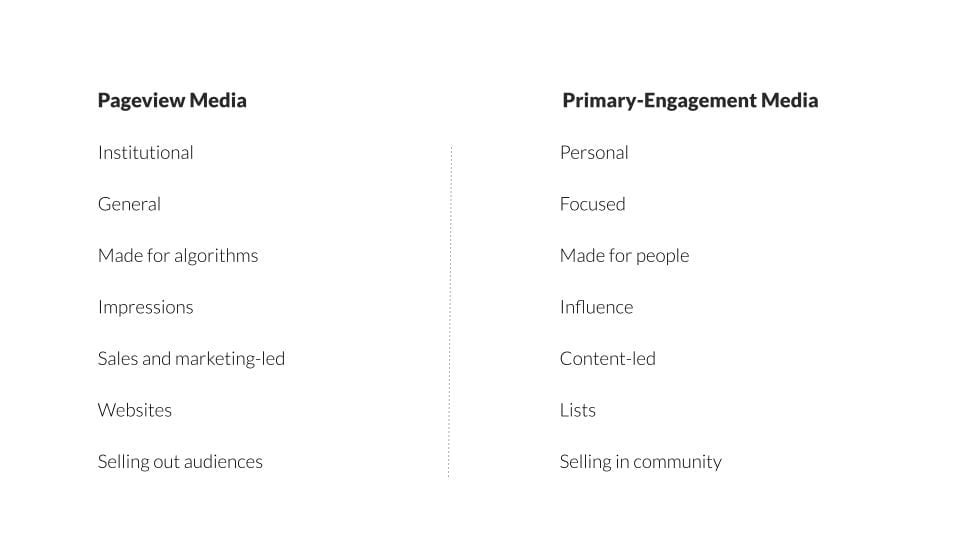Metrics
Primary-engagement media needs better measurements

Welcome to The Rebooting. I’m trying to change up formats to add more sections. Also, big thanks to Permutive and BuzzFeed for their support this week. (Get in touch if you’d like to discuss partnership programs.) Before we get into the metrics discussion, a word from Permutive.

The rules of advertising are changing.
Consumers are concerned about how their data is being used in advertising, regulators across the globe are closing in, and browsers are blocking third-party data.
Publishers and advertisers need to develop responsible marketing practices that protect consumers’ data.
Built on the core principles of privacy, consent and transparency, Permutive’s Audience Platform empowers publishers and advertisers to responsibly activate audiences without any third-party access to personal data. Offering insights, modeling and activation in cookie-restricted environments.
The data decisions that are made today will impact your ability to continue to effectively execute digital marketing in the future.
Metrics that matter
My rule of thumb as someone who has moderated a disturbing number of conference panels is that if you’re stuck in a conversation going nowhere, just go to: “Let’s talk about metrics.”
And that’s because there are always issues with metrics. My first complaint as a reporter was in 2000 from a publisher complaining that the NetRatings visitor stats I cited didn’t match their analytics. I’d get those dozens of times over the years, constantly having to reiterate that analytics double count and ComScore, while imperfect, is used by media buyers, etc. The fact that Nielsen, which was once described to me as being “unable to organize a one-car funeral,” is still valued at $10 billion, even though everyone complains about its measurements, shows how every metric is media is imperfect.
And that’s mostly fine since everyone is stuck with the same imperfect metrics. The more pernicious impact of bad media metrics is when they incentivize publishers to take shortcuts. The scale era prioritized big top of the funnel metrics like uniques and views. That led every publisher, even the most reputable, to spin up SEO and Facebook chop shops that wrote to algorithms instead of audiences. The billions of Facebook video views publishers touted were on their face absurd, but they were tangible.
That should change. I believe we’re in a shift from publishing that’s pageview driven to primary-engagement media. (Both will coexist. SEO isn’t going anywhere any time soon.) The dynamics are different, needing different measurements.





